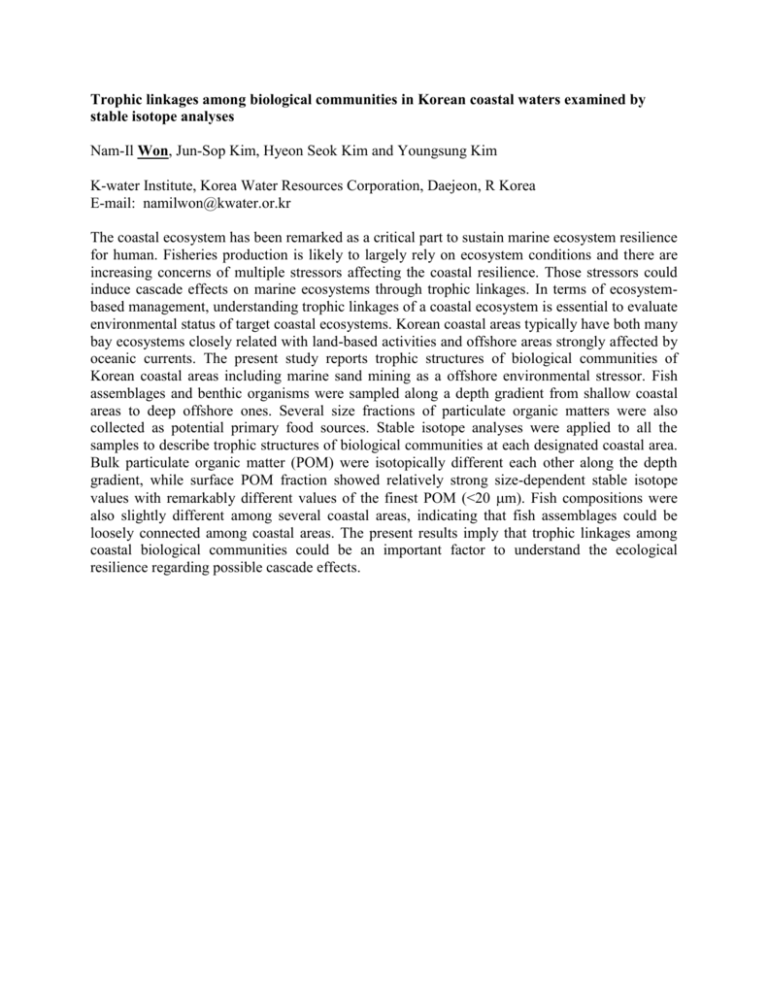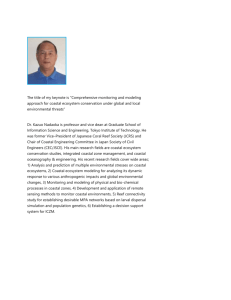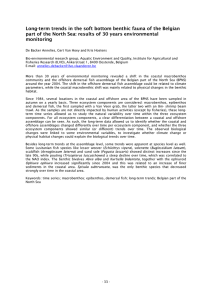10613_Won-ed_AP
advertisement

Trophic linkages among biological communities in Korean coastal waters examined by stable isotope analyses Nam-Il Won, Jun-Sop Kim, Hyeon Seok Kim and Youngsung Kim K-water Institute, Korea Water Resources Corporation, Daejeon, R Korea E-mail: namilwon@kwater.or.kr The coastal ecosystem has been remarked as a critical part to sustain marine ecosystem resilience for human. Fisheries production is likely to largely rely on ecosystem conditions and there are increasing concerns of multiple stressors affecting the coastal resilience. Those stressors could induce cascade effects on marine ecosystems through trophic linkages. In terms of ecosystembased management, understanding trophic linkages of a coastal ecosystem is essential to evaluate environmental status of target coastal ecosystems. Korean coastal areas typically have both many bay ecosystems closely related with land-based activities and offshore areas strongly affected by oceanic currents. The present study reports trophic structures of biological communities of Korean coastal areas including marine sand mining as a offshore environmental stressor. Fish assemblages and benthic organisms were sampled along a depth gradient from shallow coastal areas to deep offshore ones. Several size fractions of particulate organic matters were also collected as potential primary food sources. Stable isotope analyses were applied to all the samples to describe trophic structures of biological communities at each designated coastal area. Bulk particulate organic matter (POM) were isotopically different each other along the depth gradient, while surface POM fraction showed relatively strong size-dependent stable isotope values with remarkably different values of the finest POM (<20 m). Fish compositions were also slightly different among several coastal areas, indicating that fish assemblages could be loosely connected among coastal areas. The present results imply that trophic linkages among coastal biological communities could be an important factor to understand the ecological resilience regarding possible cascade effects.









